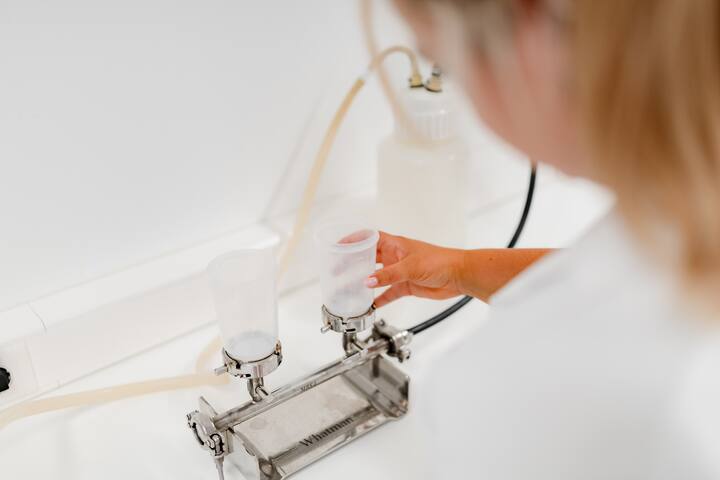
Cooling tower water (in accordance with WAC/V/A/005)
Cooling tower water (in accordance with WAC/V/A/005)
Cooling towers fall under a separate ruling in the Legionella Decree. For these installations, other sampling frequencies are applicable.
Cooling tower water (in accordance with WAC/V/A/005) in short
Falls under legionalle decree
Separate sampling frequencies
1. Natural draft cooling towers that utilise surface water
Annually in the period from 1 June to 15 October (location: cooling tower supply line). sample 1: after the temperature of surface water rises above 20°C daily for a period of fourteen days and before 15 July. sample 2: in the middle of the remaining period until October 15.
2. Forced draught cooling towers that utilise surface water
Annually in the period from 1 June to 15 October (location: cooling tower supply line). sample 1: after the temperature of surface water rises above 20°C daily for a period of fourteen days and before 15 July. sample 2: in the middle of the remaining period until October 15.
3. Cooling towers that do not work with surface water
Cooling towers that have been in service for a whole year: sample 1 between 1 April and 31 May. sample 2 between 15 July and 15 September. Cooling tower that has been in service for a limited period: sample 1: at least two weeks after initial operation. sample 2: in the middle of the operating period.
It is very important to note that these are the minimum frequencies. If any risks are present that prevent the aforementioned measures from providing sufficient insight into an installation and its management, an increase in the frequency of inspections may be warranted..
Need help in the field of Cooling Tower Water (in accordance with WAC/V/A/005)?
Leading companies in this service

Normec Foodcontrol
Wetteren Belgium